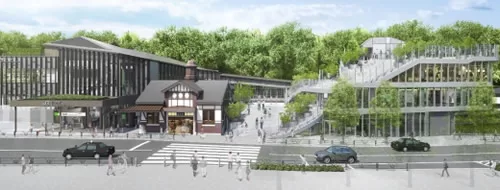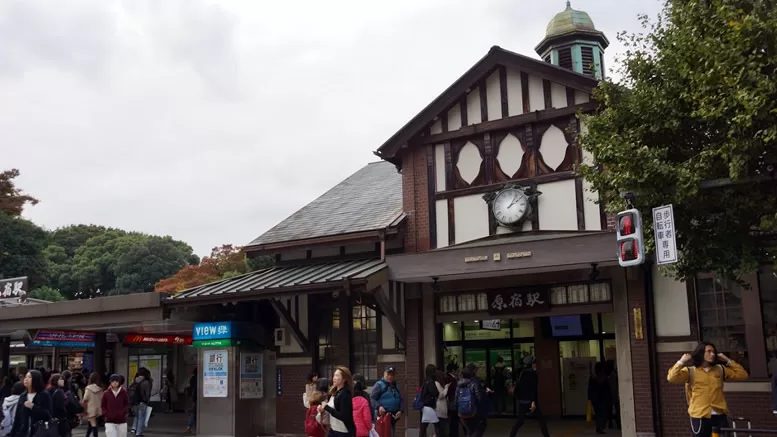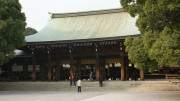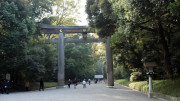Harajuku Station, situated on Tokyo’s Yamanote Line, boasts a rich history mirroring the city’s evolution. Originally opened on October 30, 1906, it served as a gateway to the nearby Yoyogi Park and the Meiji Jingu Shrine that was completed in 1920. This proximity transformed the station into a bustling hub for visitors, solidifying its importance in Tokyo’s transportation network.
Featuring only two platforms, Harajuku Station was initially one of the smaller stops on the Yamanote Line. Its original building (pictured above), erected in 1924, showcased distinctive European architecture. This iconic structure, with its wooden frame and charming design, became a cherished Harajuku landmark. For decades, it stood as one of Tokyo’s oldest wooden railway stations. However, by the early 2000s, the building and its many extensions were showing signs of age, with safety and accessibility concerns arising.
As part of Tokyo’s infrastructure modernization efforts, particularly in preparation for the 2020 Olympics, Harajuku Station underwent significant renovations. A new, modern station building opened to the left of the old one in March 2020, designed to accommodate increasing passenger numbers and enhance accessibility. The beloved historic building faced demolition, much to the dismay of locals and rail enthusiasts. Nonetheless, plans to dismantle and preserve its essence for future reconstruction offered a glimmer of hope.
The pandemic delayed the Olympics and many Tokyo projects, leaving the old station site vacant across from popular Takashita Street for many years. Recently, JR East announced plans to reinstate the old station building, combining a modern, reinforced concrete interior with a faithful recreation of the cherished 1924 facade. This new structure will adhere to current safety and accessibility standards.
Construction is slated to begin in mid-2024, with completion expected in December 2026. The rebuilt station will occupy the right side of the current modern glass station entrance, serving as a focal point for a new plaza and a new modern commercial development. JR East aims to “reuse some of the old station building’s exterior materials, adhering to laws and regulations, to create a safe and familiar building.”

Artists impression of the new station complex
Japan has a history of recreating heritage buildings. Concerns about earthquakes and other hazards have led to the construction of modern replicas of many castles nationwide. Tokyo’s Old Shimbashi Station, now a museum, and the Kabuki-za theater (rebuilt in 1950 and 2010 to the 1924 design) are other examples of rebuilt landmarks.
JR East Press release (Japanese)
https://www.jreast.co.jp/press/2024/tokyo/20240423_to02.pdf





